What Makes Greek Food So Healthy? [+ 9 Greek Foods to Try]

Key Takeways
From fast food to fine dining, Americans are eating out more than ever. A recent study, published in 2020 in The Journal of Nutrition, found that restaurant meals provided one in five calories for adults in the United States.
But whether you’re trying to manage or prevent a specific health condition, or just want to maintain your overall health, eating at restaurants may not be your best bet when trying to maintain a healthy diet.
So what do you do if you’re traveling and have to eat out for most meals? Or what if you like to go out to eat, but are trying to keep your diet healthy? One great option is Greek food!
Is Greek Food Healthy?
The life expectancy in Greece is known to be much higher than in the United States and other parts of the world. This may be due to several factors, but diet is certainly among them.
In fact, the Mediterranean Diet, which is based on staples from Greek diet among that of nearby countries, has continually ranked as the #1 Best Diet Overall by the U.S. News & World Report.
Research suggests that this diet may even lower your chances of stroke and heart attack, reduce the risk of depression, and improve cognitive function.
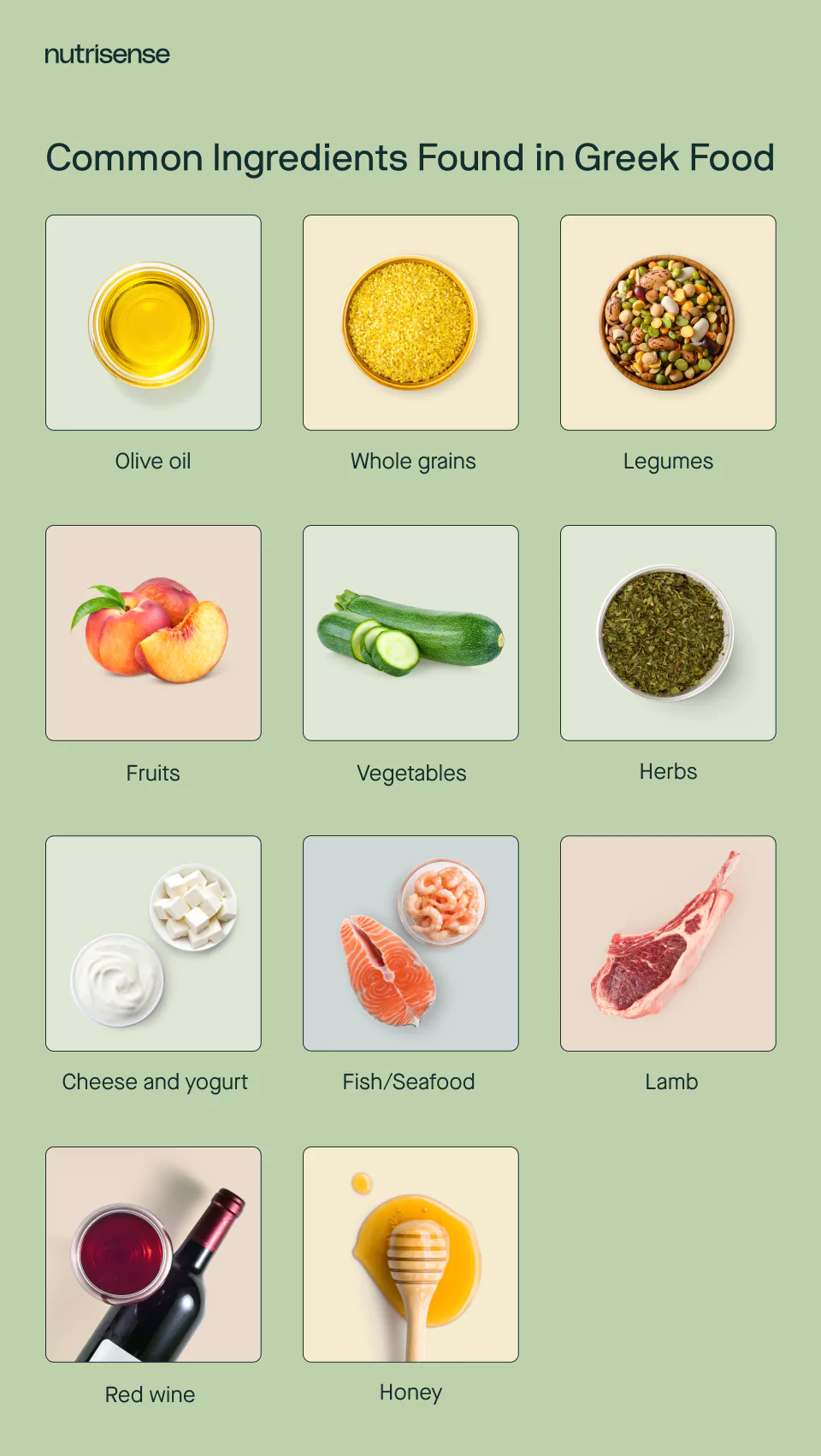
Greek dishes tend to contain heart-healthy ingredients like:
- olive oil
- whole grains
- legumes
- fruits
- Vegetables
- fish/seafood
As a type of Mediterranean cuisine, Greek food is also generally low in red meat, added sugar, and saturated fat. With these simple ingredients, Greek food is great to make at home, but going out to a Greek restaurant can be a healthy option too.
So what else about the traditional Greek diet makes it so healthy? Here are some health benefits of just a few of the common ingredients in Greek food.
Olive Oil
Olive oil is a crucial component in Greek food and is considered to be a type of healthy fat. Extracted from the ripe fruit of the olive tree, olive oil has numerous health benefits.
A 2015 review found that it may improve cardiovascular health by preventing diabetes, obesity, and insulin resistance. That same review found that olive oil has anti-inflammatory and antioxidant properties and may reduce the risk of breast and digestive tract cancers.
Whole Grains
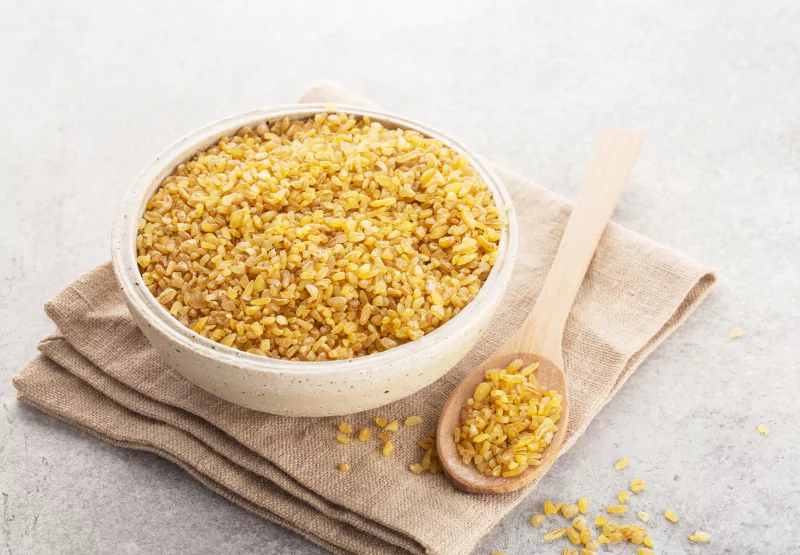
Whole grains are another staple in Greek cuisine. These include barley, semolina, bulgur, and sprouted wheat.
Consuming whole grains has been shown to decrease your risk of inflammation and type 2 diabetes. Whole grains are also higher in dietary fiber than refined grains.
A diet high in fiber helps maintain bowel health, lower cholesterol, control your blood sugar, and may even reduce your risk of colorectal cancer.
Chickpeas
Chickpeas are another common ingredient in Greek food. Chickpeas, also known as garbanzo beans, are good sources of fiber, protein, and complex carbohydrates.
Studies show that chickpeas may decrease your risk of developing cardiovascular diseases and type 2 diabetes, as well as promote weight management. They have also been shown to have a positive effect on glycemic control.
Herbs
Herbs aren’t only responsible for adding flavor to Greek dishes — they are healthy foods themselves! A 2009 study that focused on rosemary, licorice, chamomile, which are all local to Greece, found that each herb had unique health benefits.
These benefits included reducing inflammation, possessing antioxidant and potential antiviral properties.
Greek Yogurt

The first written mention of yogurt dates all the way back to Greece in 100 B.C. Greek yogurt has now become a staple in Greek food. In fact, tzatziki, which is a common sauce used in Greek cooking, uses Greek yogurt as a base.
Greek yogurt has almost twice the amount of protein of regular yogurt products and makes for a great low carb and low-calorie snack. A 2019 study even found that eating Greek yogurt after exercise had a positive impact on bone formation among young adult men.
Yogurt is also known to contain probiotics that can promote gut health, and yogurt may even increase the diversity of the healthy bacteria in your microbiome.
Building Your Plate with Greek Food
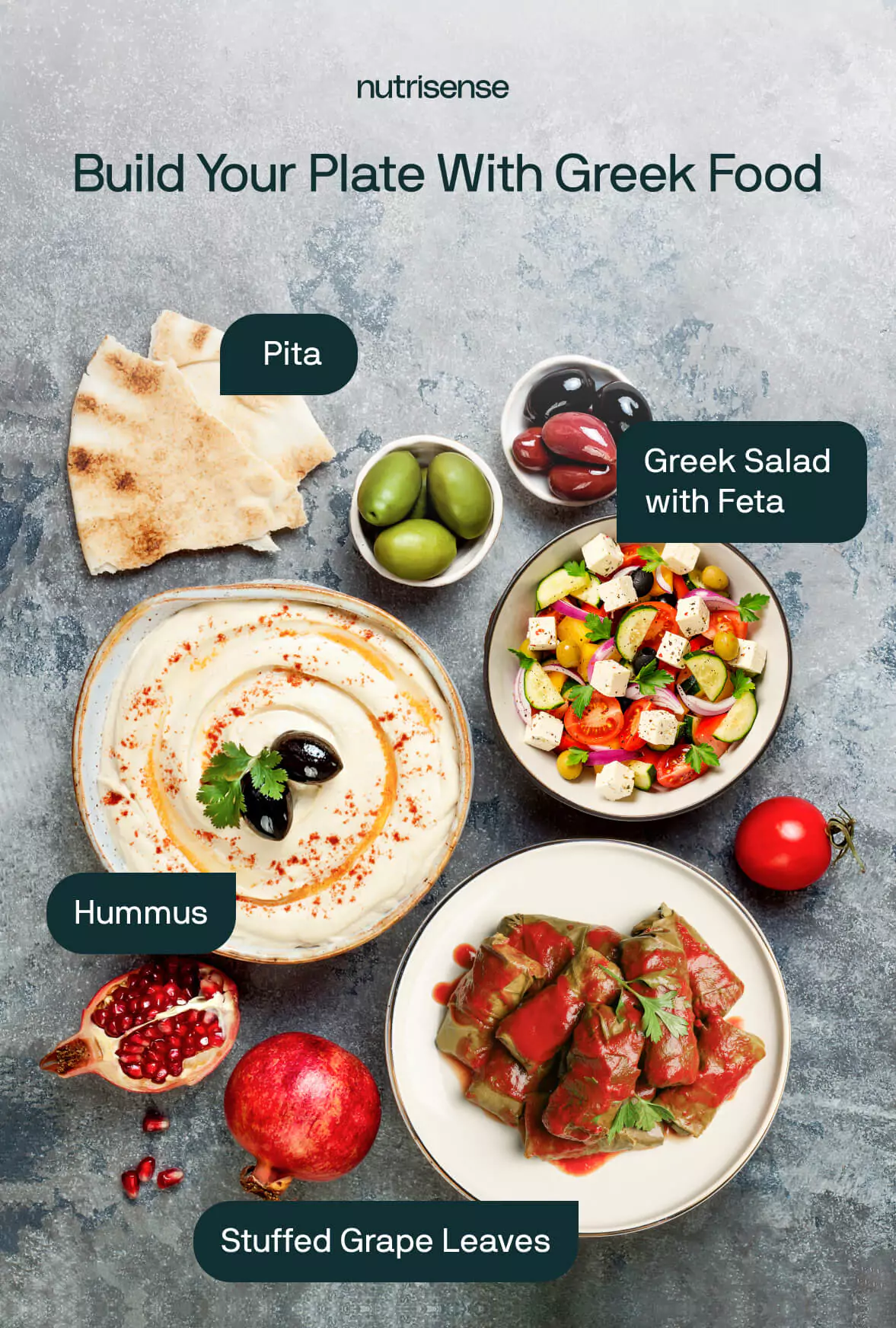
According to the United States Department of Health and Human Services and the Dietary Guidelines for Americans, 2020-2025, the core components of a healthy plate include fruits and vegetables, whole grains, protein, and low-fat dairy or fortified dairy alternatives.
Because so much Greek food contains heart-healthy oils, whole grains, fruits and vegetables, and lean proteins, building your plate with Greek food is a great way to meet these dietary guidelines.
A healthy Greek meal that meets these dietary guidelines should include:
Protein
In a Greek meal, protein commonly comes from dairy, meat, seafood, and/or legumes. Dishes like gyros or souvlaki are also high-protein meat dishes that are easy to find at most Greek restaurants.
Here are some common protein sources found in Greek food:
- Salmon, tuna, mackerel, or another fish that contains omega-3 fatty acids
- Poultry, pork, or lamb
- Chickpeas or other legumes
- Nuts and seeds
- Yogurt or cheese
Fruits and Vegetables
Researchers recommended that at least half of your plate consist of vegetables. The United States Department of Agriculture (USDA) guidelines recommend the average adult consume two servings of fruit per day. Popular fruits and vegetables included in Greek cooking include:
- Green beans
- Leafy greens like kale and spinach
- Eggplant
- Squash
- Artichokes
- Cucumbers
- Tomatoes
- Berries
- Apples
- Grapes
- Citrus fruits
- Figs and dates
- Olives
Whole Grains
The Dietary Guidelines suggest that at least half of your grain intake is made up of whole grains. Include:
- Whole wheat bread
- Pita bread
- Barley
- Whole grain couscous
- Farro
Note that many of these grains include gluten and if you are sensitive to gluten, you may want to find some substitutions such as whole grain brown rice.
Healthy Fats
Olive oil is widely used in Greek food, either as a salad dressing, a cooking oil, or a topping over hummus. Here are some other examples of healthy fats found in Greek food:
Low-Fat Dairy
You may want to include a low-fat source of dairy in your meal to add an extra boost of flavor. Feta cheese, which originated in Greece, is a great option.
This type of cheese is often found in Greek salads or sandwiches. Feta is low in calories and low in fat compared to other cheeses like cheddar or gouda.
However, because feta is brined in salt, it has a relatively high sodium content compared to other cheeses. If you are trying to limit sodium in your diet, you may want to avoid feta or use it in moderation.
Greek Food and Blood Sugar

As you’ve now seen, Greek food is generally high in common Mediterranean diet ingredients like lean proteins, olive oil, fresh vegetables, whole fruits, and whole grains. A 2013 study found that a Mediterranean diet promoted blood sugar control, weight loss, and a favorable lipid profile in people with type 2 diabetes.
Another study done on adults at risk of developing diabetes found that the Mediterranean diet is effective at managing or preventing type 2 diabetes. In this study, researchers found that a Mediterranean diet promoted blood sugar control, weight loss, and healthy cholesterol levels.
Meal Sequencing with Greek Food
The concept of meal sequencing, or eating specific foods in a strategic order to promote better blood sugar control, may also be helpful when it comes to eating Greek food.
Studies show that adhering to a meal sequencing strategy of consuming your protein and/or fats before your carbohydrates may prevent blood sugar spikes.
This is because eating carbohydrates alone can cause your body to absorb the glucose they contain very quickly. This can lead to a spike in blood sugar, followed by a quick drop.
To put this into practice, you may consider consuming the protein, fiber, and fat sources on your plate before you eat carbohydrates.
9 Healthy Greek Foods to Try
Whether you’re going out to eat at a local Greek restaurant or cooking a Greek-inspired meal at home, here are nine of our favorite healthy Greek dishes to try out.
1) Hummus
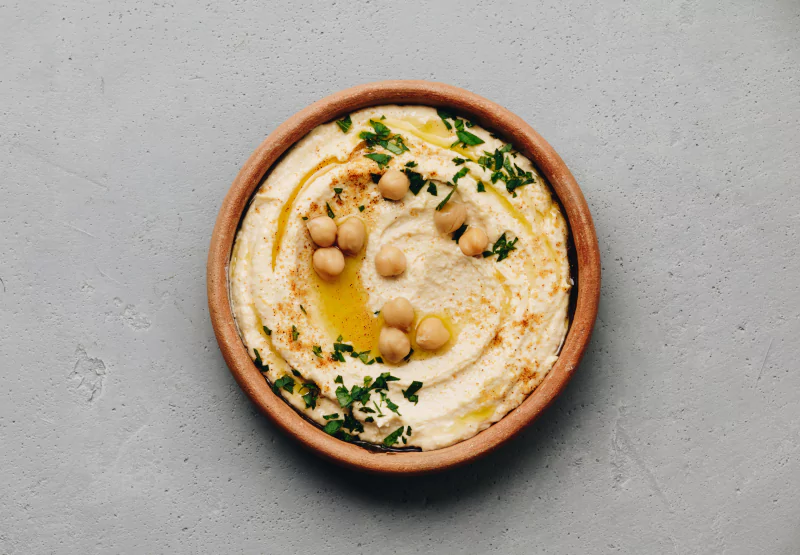
Hummus is a world-famous dip made from ground chickpeas, tahini, lemon juice, and olive oil. Hummus is low in calories, high in polyunsaturated and monounsaturated fats, and has no cholesterol.
It also contains potassium, protein, fiber, and other vitamins and minerals, and makes a great appetizer for almost any meal. Research has shown that hummus and chickpeas may be effective in promoting glucose and insulin regulation and weight management.
2) Dolmades
Dolmades are a popular Greek dish consisting of grape leaves stuffed with rice and herbs. Stuffed grape leaves are a good source of polyphenols, which may have antioxidant and anti-inflammatory properties. Since this is lower in protein, don’t forget to pair some more protein with this one!
3) Choriatiki (Greek Salad)

A traditional Greek salad is a great healthy option full of fresh vegetables. It usually consists of tomatoes, cucumbers, red onion, green bell peppers, olives, and feta cheese.
It is dressed in olive oil with a splash of vinegar, and topped off with a sprinkle of oregano.
4) Lentil Soup
Greek lentil soup, or Fakes soupa, is a healthy comfort food for a cold day. Fakes soupa is generally made with brown lentils, fresh herbs, olive oil, onion, and garlic.
Lentils are an excellent source of dietary fiber, potassium, and iron.
5) Gigandes Plaki

Gigandes Plaki is a dish of large white beans baked in a tomato sauce with fresh herbs. Beans are an incredibly nutritious food.
Not only are they a good source of potassium, magnesium, folate, iron, and fiber, they can also help reduce cholesterol and reduce the risk of heart disease and diabetes.
6) Papoutsakia
Papoutsakia is a traditional Greek dish made from stuffed eggplant. Eggplant is fiber-rich and a good source of manganese.
Because they are often stuffed with ground beef and creamy bechamel sauce, this dish may be best enjoyed in moderation.
7) Horta
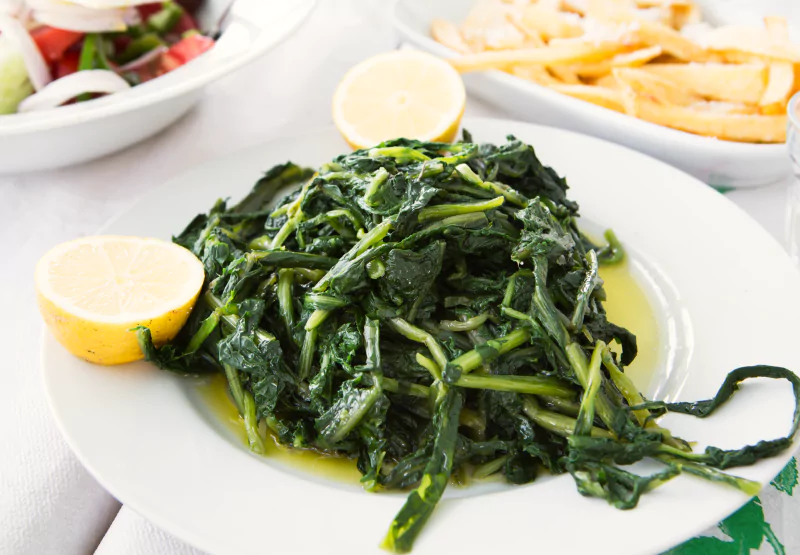
Horta is a dish of boiled wild greens. These can include dandelion, spinach, swiss chard, and sorrel, among others.
Dark leafy greens are great sources of vitamins, minerals, and bioactive compounds that may help prevent cancer, promote bone health, and prevent heart disease. Eating a diet high in leafy green vegetables has been shown to help reduce the risk of cognitive decline as you age.
8) Spanakopita
Spanakopita is a popular Greek spinach pie, usually consisting of spinach (or another leafy green) and feta cheese wrapped in phyllo dough. Spinach is rich in folate, calcium, and beta carotene, and has even been shown to lower blood pressure.
9) Gemista

Gemista is a popular Greek comfort food made of baked vegetables stuffed with rice, onion, garlic, olive oil, and herbs. The stuffed vegetables are usually eggplant, tomato, or peppers. Pair this one with some additional protein and you’re all set to go!
Find the right Nutrisense programto turn insight into progress.
Go Beyond Glucose Data with Nutrisense
Your glucose can significantly impact how your body feels and functions. That’s why stable levels are an important factor in supporting overall wellbeing. But viewing glucose isn't enough. Nutrisense, you’ll be able to learn how to use your body's data to make informed lifestyle choices that support healthy living.
One-to-one coaching
Sign up to access insurance-covered video calls to work with a glucose expert: a personal registered dietitian or certified nutritionist who will help tailor your lifestyle and diet to your goals.
Monitor and measure what matters
With the Nutrisense CGM Program, you can monitor your glucose with health tech like glucose biosensors and continuous glucose monitor (CGM)s, and analyze the trends over time with the Nutrisense App. This will help you make the most informed choices about the foods you consume and their impact on your health.
Find your best fit
Ready to take the first step? Start with our quiz to find the right Nutrisense program to help you take control.

Heather is a Registered and Licensed Dietitian Nutritionist (RDN, LDN), subject matter expert, and technical writer, with a master's degree in nutrition science from Bastyr University. She has a specialty in neuroendocrinology and has been working in the field of nutrition—including nutrition research, education, medical writing, and clinical integrative and functional nutrition—for over 15 years.




